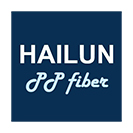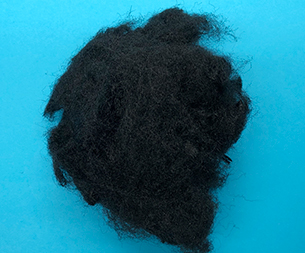In the modern industrial and textile fields, there is a material that is winning the favor of an increasing number of industries with its unique comprehensive advantages - and that is polypropylene staple fiber. What kind of charm does this synthetic fiber made from polypropylene possess that makes it the preferred material for so many application scenarios?
Outstanding features: Lightweight and strong, with remarkable performance
One of the most notable features of polypropylene staple fiber is its extremely low specific gravity, which is only around 0.91, even lighter than water. This makes the products made from it particularly lightweight. Meanwhile, it possesses outstanding mechanical properties, with both fracture strength and wear resistance being quite excellent. What is even more worth mentioning is that polypropylene staple fiber has complete hydrophobicity and hardly absorbs moisture. This characteristic makes it perform exceptionally well in humid environments, without gaining weight or growing mold due to moisture absorption.
Widely applied: Versatile from textiles to engineering
Based on these characteristics, polypropylene staple fibers have shown their prowess in various fields. In the textile industry, it is an ideal choice for making carpets, decorative fabrics and filter materials, especially in situations where moisture-proofing and mold resistance are required. In civil engineering, as a reinforcing fiber for concrete, it can effectively suppress plastic cracks and enhance the impermeability and durability of concrete. In the field of hygiene materials, due to its non-toxicity, odorlessness and good chemical stability, it is widely used in medical protective supplies and disposable hygiene products.
Key points for selection: Match your needs and focus on quality
When choosing polypropylene staple fibers, several key indicators need to be focused on. The fineness and length of fibers directly affect the performance of the final product. For instance, longer fibers are usually selected for concrete reinforcement, while in textile applications, fineness is more emphasized. The strength index is related to the durability of the product, and different application scenarios have different requirements. In addition, choosing a supplier with a good reputation is of vital importance. High-quality polypropylene staple fibers should feature uniform color, no impurities, and good dispersibility.
With the advancement of materials science, modified varieties of polypropylene staple fibers have been constantly emerging, such as flame-retardant, anti-aging, anti-static and other special functional fibers, further expanding the application boundaries. For purchasers, having a thorough understanding of the material properties and choosing the appropriate specifications of polypropylene staple fibers in combination with their own product requirements will help enhance the competitiveness of their products and gain an edge in the market.
- Unveiling the outstanding proper
- The 11th China International Sil
- How does polypropylene staple fi
- The 2025 International Textile F
- The application of polypropylene
- Cost pressure has pushed up yarn
- How to choose high-quality polyp
- New quality productive forces ar
- What are the applications of pol
- Trump announced a 100% tariff on
- Markets
- Automotive Products
- Nonwoven Lining
- Geosynthetics
- Liquid Filtration
- Apparel and Textiles
- Hygiene Products
- Building and Construction
- Other Markets
- Contact Us
- Contact Haibang





